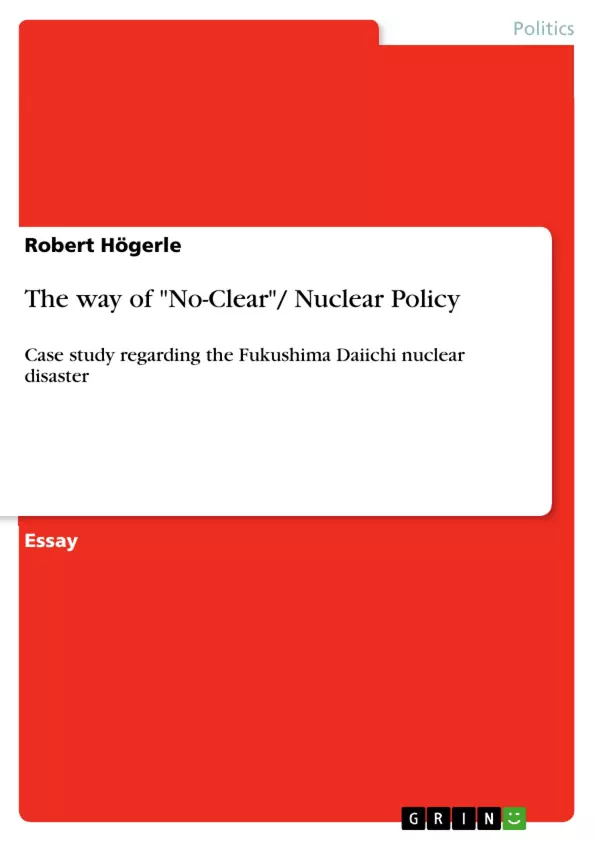"Shiru mono wa iwazu, iu mono wa shirazu."
"Those who know do not talk, those who talk do not know."
-Japanese adage
There is hardly any other saying to describe the state of affairs about the nuclear
disaster in the previous months. While in the far away continent of Europe the news
and the panic which got along with them, spread like wildfire, the Japanese nation
run through a troubled phase of confusion and disinformation in a calm way.
The two main actors of this play were and are the government ( Prime Minister Naoto
Kan1 and his staff) and the responsible company TEPCO2 (abbreviation for: Tokyo
Electric Power Company). Rather then learning by experience of nuclear incidents
before, the whole political system made some drastic mistakes.
I will attempt to investigate the main points and compare them with the best-known
case of political failure – Chernobyl.
Subsequently, there will be a view on the aftermaths in the nuclear policy worldwide,
caused by the complex of themes.
Inhaltsverzeichnis (Table of Contents)
- Introduction
- The Course of Events
- Analogy with Chernobyl
Zielsetzung und Themenschwerpunkte (Objectives and Key Themes)
This essay examines the political response to the Fukushima Daiichi nuclear disaster in 2011, comparing it to the Chernobyl disaster and exploring the broader implications for nuclear policy worldwide. The primary objective is to analyze the Japanese government's handling of the crisis, particularly its communication strategy.- The Japanese government's response to the Fukushima Daiichi nuclear disaster
- Comparison of the political response to Chernobyl and Fukushima
- The role of information policy in nuclear emergencies
- The impact of the Fukushima disaster on nuclear policy globally
Zusammenfassung der Kapitel (Chapter Summaries)
Introduction
This section introduces the essay's topic, emphasizing the confusion and misinformation surrounding the Fukushima disaster. It highlights the roles of the Japanese government and TEPCO in the crisis, emphasizing the need for a comparative analysis with the Chernobyl disaster.The Course of Events
This chapter outlines the chronology of the Fukushima disaster, detailing the earthquake, tsunami, and subsequent events at the nuclear power plant. The chapter explores the failure of the cooling system and the government's initial response, including the declaration of a nuclear emergency and the subsequent evacuation zones.Analogy with Chernobyl
This chapter delves into the comparison between Chernobyl and Fukushima, focusing on the similarities and differences in their political contexts and information policies. The chapter also discusses the technical aspects of the accidents, highlighting the distinction between Chernobyl and Fukushima in terms of their engineering implications.Schlüsselwörter (Keywords)
This essay focuses on the political aspects of nuclear disasters, specifically examining the Japanese government's response to the Fukushima Daiichi nuclear disaster, its information policy, and comparison with the Chernobyl disaster. Other key concepts include nuclear emergency response, nuclear policy, and the role of communication in crisis management.- Citar trabajo
- Robert Högerle (Autor), 2011, The way of "No-Clear"/ Nuclear Policy, Múnich, GRIN Verlag, https://www.grin.com/document/271958



